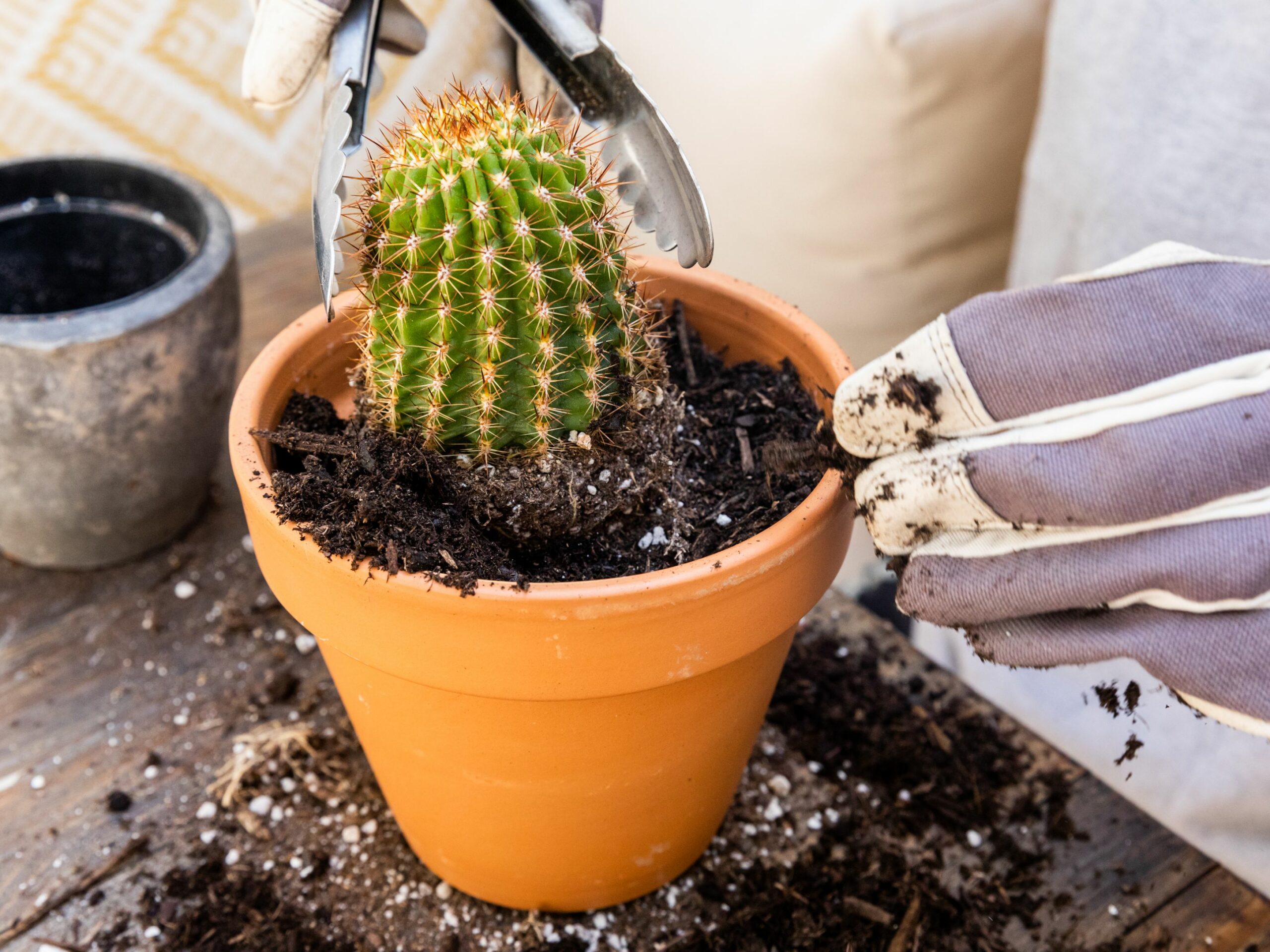Cacti are beautiful plants and are part of a very interesting botanical group; they evolved in America and have been developing extraordinary adaptations to withstand the lack of humidity and this makes them unique; They have amazing shapes, there are various colors and sizes, there is also variety in their flowering; They are undoubtedly beautiful plants that give a special touch to the garden or to the place where they are placed, since they can perfectly serve as decoration; a plant that without a doubt a gardening lover knows how to appreciate.
When the cacti grow a lot, compared to the pot where they are, it is very important to transplant them to a larger one if it is to remain healthy; It is important to take precautions to protect yourself from the thorns and also so that you are not going to spoil its roots.
What do you need for and when to transplant cacti?
- A pot (pot) that only has a few centimeters more than the previous one.
- Casquijo (gravel).
- Small rocks.
- Protective gloves (rubber or resistant fibers), they can also be leather but thick.
Instructions for and when to transplant cacti
- If you have some cacti that have lived in pots, it is important that you know that they require a transplant from time to time, because the plants are growing and the space will not be enough for them and the substrate is running out.
- Most cacti should be repotted when you start to see their roots coming out through the drainage holes in the pot or when the tops of the cacti reach the edges of the pot. Generally, this change must be made between the ages of two and four.
- You should do these transplants either in spring or summer, but never in winter, as moisture can cause root damage and rot.
- Take the new pot(which should be a little bigger than the old one) and put small stones or a layer of gravel in the bottom to ensure that your cactus has good drainage.
- Take the substrate, which should have little sand, only up to 50%, the rest can be garden soil and peat. You can go to a nursery or garden, which will surely recommend you and sell you a good substrate for cacti.
- Before transplanting the cactus, you should put on protective gloves that punctures cannot enter.
- You must loosen the soil that is in the old pot, for this take a knife that is not sharp and begin to remove the soil with saw-like movements, do it until you see that the soil comes out in a solid mass. It is important to be sure that the soil is completely loose before removing the cactus, the root must come out easily so as not to damage your plant.
- For greater protection take a newspaper, gather several sheets then fold them in three and wrap the cactus and then pull it very carefully, you can also help yourself with special barbecue tongs but you must be very delicate (a).
- When you remove the cactus from its initial home you must be very careful not to damage its roots, because if you do, fungi could enter there, so you must dispose of the soil that is required very carefully and using an object that does not have edge. You can use your fingers without going to remove the gloves during this process; the root does not have to be completely clean but as much as you can
- Take advantage and check its roots to see if it has any pest, disease or state of decomposition, if this is the case, apply some treatment, fungicide if it has a fungus, pesticide if it has any pest or cut any root that you see is dead.
- Put your cactus in its new pot with the soil at exactly the same level as it was in its old home, respecting the height of its neck.
- Now put your new pot with the cactus in the shade, it should not get much sun, at least for a few days.
Tips for and when to transplant cacti
- If for any reason any root is damaged, take charcoal (peat) that is pulverized and apply it, you must also stop watering your plant for a period of 10 days.
- It will always give more results if you let the experts help you; do not hesitate to call a gardener you trust.
- It is recommended, after you remove the cactus from your first pot, that you leave it outside for 4 days so that its roots dry.


















